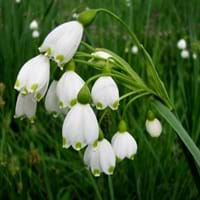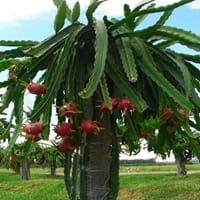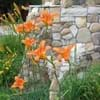Life Span
Perennial
Perennial
Type
Bulb or Corm or Tuber
Cactus or Succulent
Origin
Europe, Mediterranean, Northern Africa, Western Asia
North America, Latin America and the Caribbean, Central America, South America
Types
Not available
Not Available
Habitat
Damp shady woods, Hedgebanks, Mediterranean region
tropical environments, Tropical regions
USDA Hardiness Zone
Not Available
Not Available
AHS Heat Zone
Not Available
Not Available
Sunset Zone
21,22
Not Available
Habit
Clump-Forming
Not Available
Minimum Height
Not Available
Flower Color
White, Light Pink
Not Available
Flower Color Modifier
Bicolor
Not Available
Fruit Color
Not Available
Red, Salmon
Leaf Color in Spring
Green
Not Available
Leaf Color in Summer
Light Green
Not Available
Leaf Color in Fall
Several shades of Green
Not Available
Leaf Color in Winter
Light Green
Not Available
Leaf Shape
Strap shaped
Lanceolate
Plant Season
Spring, Summer, Fall, Winter
Not Available
Sunlight
Full Sun, Partial Sun, Partial shade
Full Sun
Growth Rate
Medium
Not Available
Type of Soil
Loam, Sand
Loam, Sand
The pH of Soil
Acidic, Neutral, Alkaline
Acidic, Neutral, Alkaline
Soil Drainage
Well drained
Well drained
Bloom Time
Early Spring, Spring, Late Spring, Early Summer, Late Summer, Winter, Late Winter
Not Available
Tolerances
Drought, Light Frost, Variety of soil types
Deer resistant, Drought, Heat And Humidity, Salt, Shade areas, Wet Site
Where to Plant?
Ground, Pot
Container, Ground, Pot
How to Plant?
Divison, Seedlings, Seperation
Semi-hardwood cuttings, Stem Cutting
Plant Maintenance
Low
Medium
Watering Requirements
Needs less watering
Water slowly, and allow to dry completely between soakings
In Summer
Lots of watering
Lots of watering
In Spring
Moderate
Moderate
In Winter
Average Water
Less Watering
Soil pH
Acidic, Neutral, Alkaline
Acidic, Neutral, Alkaline
Soil Type
Loam, Sand
Loam, Sand
Soil Drainage Capacity
Well drained
Well drained
Sun Exposure
Full Sun, Partial Sun, Partial shade
Full Sun
Pruning
Remove damaged leaves, Remove dead branches, Remove dead leaves
Dispose of diseased portions, Remove damaged leaves, Remove dead branches, Remove dead leaves, Remove dead or diseased plant parts
Fertilizers
Bulb fertilizer
15-30-15 liquid fertilizer, Fertilzer with low nitrogen content
Pests and Diseases
Narcissus Bulb Fly, Slugs
Bacterial Stem Rot, Birds, Brown Rot
Plant Tolerance
Drought, Light Frost, Variety of soil types
Deer resistant, Drought, Heat And Humidity, Salt, Shade areas, Wet Site
Flower Petal Number
Single
Not Available
Showy Fruit
No
Not Available
Edible Fruit
No
Not Available
Foliage Texture
Fine
Bold
Foliage Sheen
Matte
Not Available
Attracts
Ants, Bees, pollinators
Not Available, pollinators
Allergy
Not Available
Not Available
Aesthetic Uses
Beautification, Bouquets, Cottage Garden, Ground Cover, Showy Purposes
Showy Purposes
Beauty Benefits
Anti-ageing
Anti-ageing, Good for skin, Making cosmetics
Environmental Uses
Air purification
Food for animals
Medicinal Uses
Alzheimer’s Disease
anti-cancer, anti-inflammatory, Antitumor, Diabetes, Healing, Nutritive, Skin wounds
Part of Plant Used
Flowers, Root
Flowers, Fruits, Seeds
Other Uses
Used as Ornamental plant
Cosmetics, Food for animals, Used as a nutritious food item, Used for its medicinal properties
Used As Indoor Plant
No
Yes
Used As Outdoor Plant
Yes
Yes
Garden Design
Alpine, Container, Cutflower, Lawns and Turf, Mixed Border, Rock Garden / Wall, Wildflower
Container, Houseplant, Rock Garden, Wall
Botanical Name
Leucojum aestivum
Hylocereus undatus
Common Name
Leucojum, summer snowflake
Pitahaya, Dragon Fruit
In Hindi
Leucojum
hylocereus
In German
Leucojum
hylocereus
In French
Leucojum
hylocereus
In Spanish
Leucojum
hylocereus
In Greek
Leucojum
hylocereus
In Portuguese
Leucojum
hylocereus
In Polish
Leucojum
Hylocereus
In Latin
Leucojum
Hylocereus
Phylum
Magnoliophyta
Magnoliophyta
Class
Liliopsida
Magnoliopsida
Order
Liliales
Caryophyllales
Family
Liliaceae
Cactaceae
Genus
Leucojum
Hylocereus
Clade
Angiosperms, Monocots
Angiosperms, Core eudicots, Eudicots
Tribe
Not Available
Hylocereeae
Subfamily
Amaryllidoideae
Cactoideae
Importance of Leucojum and Hylocereus
Want to have the most appropriate plant for your garden? You might want to know the importance of Leucojum and Hylocereus. Basically, these two plants vary in many aspects. Compare Leucojum and Hylocereus as they differ in many characteristics such as their life, care, benefits, facts, etc. Every gardener must at least have the slightest clue about the plants he wants to plant in his garden. Compare their benefits, which differ in many ways like facts and uses. The medicinal use of Leucojum is Alzheimer’s Disease whereas of Hylocereus is anti-cancer, anti-inflammatory, Antitumor, Diabetes, Healing, Nutritive and Skin wounds. Leucojum has beauty benefits as follows: Anti-ageing while Hylocereus has beauty benefits as follows: Anti-ageing.
Compare Facts of Leucojum vs Hylocereus
How to choose the best garden plant for your garden depending upon its facts? Here garden plant comparison will help you to solve this query. Compare the facts of Leucojum vs Hylocereus and know which one to choose. As garden plants have benefits and other uses, allergy is also a major drawback of plants for some people. Allergic reactions of Leucojum are Not Available whereas of Hylocereus have Not Available respectively. Having a fruit bearing plant in your garden can be a plus point of your garden. Leucojum has no showy fruits and Hylocereus has no showy fruits. Also Leucojum is not flowering and Hylocereus is not flowering . You can compare Leucojum and Hylocereus facts and facts of other plants too.





